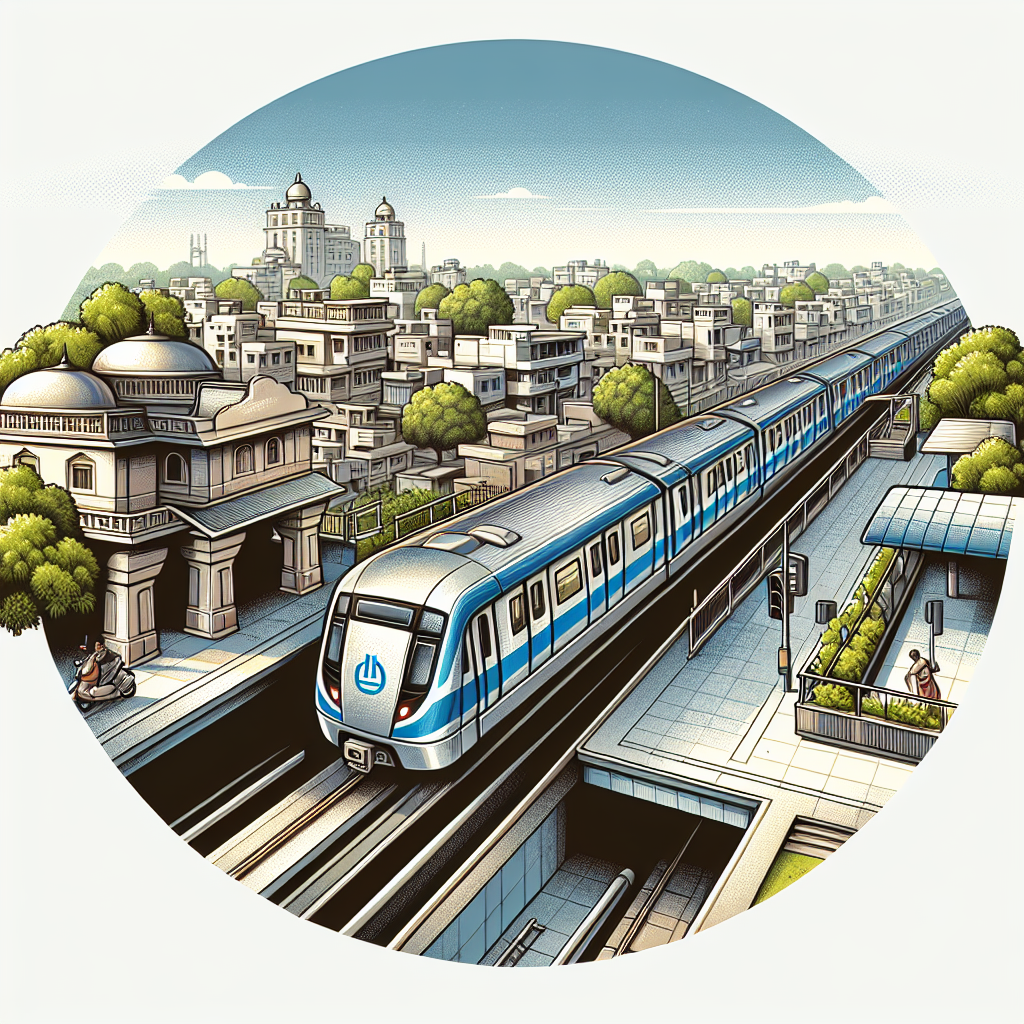Cabinet Approves Lucknow Metro Phase-1B: Transforming Urban Mobility with 11.165 Km Expansion
Phase-1B is designed to bridge significant connectivity gaps in Old Lucknow, linking key commercial, cultural, and institutional zones.

- Country:
- India
The Union Cabinet, chaired by Prime Minister Shri Narendra Modi, has given the green light to Phase-1B of the Lucknow Metro Rail Project, marking a major step forward in the city’s transportation infrastructure. This phase will cover 11.165 km with 12 stations—7 underground and 5 elevated—connecting some of the most historic and densely populated areas of the city. Upon its operationalization, Lucknow will boast a 34 km active metro network, offering citizens faster, cleaner, and more efficient urban transit.
Strategic Expansion of Metro Connectivity
Phase-1B is designed to bridge significant connectivity gaps in Old Lucknow, linking key commercial, cultural, and institutional zones. The corridor will run through:
-
Commercial Hubs: Aminabad, Yahiyaganj, Pandeyganj, Chowk
-
Healthcare Institutions: King George’s Medical University (Medical College)
-
Tourist Attractions: Bara Imambara, Chota Imambara, Bhool Bhulaiya, Clock Tower, Rumi Darwaza
-
Culinary Hotspots: Areas renowned for Lucknow’s famous Awadhi cuisine
By integrating these areas into the metro grid, the project will not only enhance mobility but also strengthen the city’s socio-economic fabric.
Tackling Traffic Congestion
Old Lucknow’s narrow, congested roads have long been a bottleneck for daily commuters and visitors. The Phase-1B metro corridor will offer a fast, reliable, and road-traffic-independent alternative, reducing congestion, shortening travel times, and improving road safety.
Environmental Gains
A shift from fossil fuel-based vehicles to metro rail will cut carbon emissions significantly. The project aligns with India’s broader climate commitments by promoting green, sustainable public transport.
Economic Boost and Urban Growth
Improved access to vital city points—such as the airport, railway stations, and bus depots—will stimulate productivity, boost trade in local markets, and attract tourism. Businesses located near new metro stations are likely to see higher footfall, while previously underserved neighborhoods may experience fresh waves of investment.
Social and Equity Benefits
The expansion will democratize mobility by making modern transport available to a wider demographic, including low-income residents who currently rely on slower, less reliable options. Improved accessibility to healthcare, education, and employment centers will enhance quality of life and reduce urban mobility disparities.
Shaping Lucknow’s Future
Phase-1B of the Lucknow Metro is more than just an infrastructure project—it is an urban transformation initiative. By addressing connectivity challenges, fostering economic vitality, reducing pollution, and improving inclusivity, the project will play a pivotal role in shaping Lucknow’s sustainable development trajectory for decades to come.
ALSO READ
India's Path to Prosperity: Expanding Social Protection and Economic Growth
Govt Unveils Economic Growth Strategy to Tackle Cost-of-Living and Jobs
Accelerating India's Path to Economic Growth through Strategic Partnerships
IMF Boosts Economic Growth Forecast: Emerging Markets on the Rise
Ladakh's Pashmina: The 'Soft Gold' Fuelling Economic Growth










